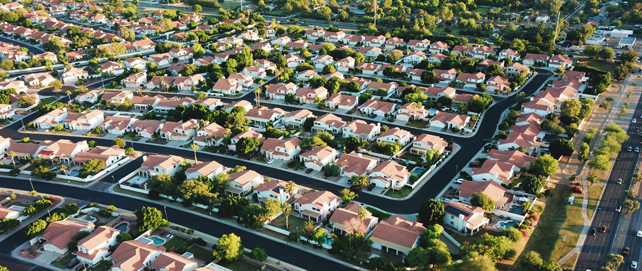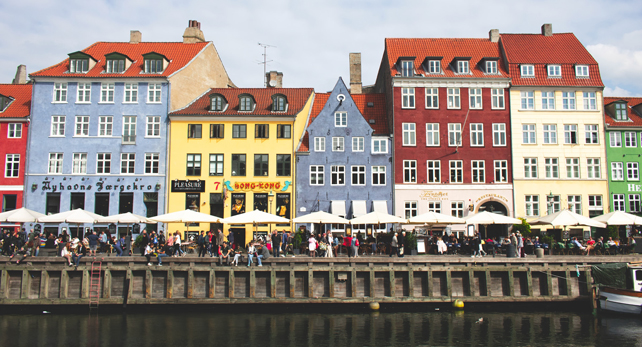The rapid growth of cities comes with many challenges. How can we build greener? And how can we support the health and wellbeing of the people living in urban areas?
This seems to involve a trade-off. Many studies show that denser neighborhoods are relatively better for the planet, but come with higher depression risks.
It may seem unsurprising that depression is less common in the countryside. Stress, noise, air pollution, loneliness, and lack of sunlight on the ground floor of a high-rise apartment are just a few examples of the challenges faced by urban dwellers.
These factors may in fact be behind the 39 percent increased risk of depression for urban areas in western European countries and in the US.
But as it turns out, some urban areas are better than others. My colleagues and I have produced a new study, published in Science Advances, which shows that people in the suburbs are more likely to be depressed than those in city centers.
Important factors
We wanted to find out which factors in the built environment were the most important for psychological wellbeing so that cities can be designed better to be both sustainable and supportive of mental health.
A hectare of land can house the same amount of population with dense low-rises or sparse high-rises. High rises can be either in dense bustling business districts or in less dense city areas with fancy apartments facing a large green.
Suburbs, however, tend to have a medium density of low-rise buildings. Which approach should we take?
Our team, including researchers from Yale University in the US, Stockholm and Gävle Universities in Sweden, and Aarhus University and the University of Copenhagen in Denmark, looked at a very large amount of source material for our study.
Using machine learning tools, we examined satellite images of all buildings in Denmark over 30 years (1987-2017). We then classified them into different categories depending on height and density.
We combined the resulting map with individual residential addresses, and health and socio-economic registers in Denmark. This allowed us to account for known factors that increase the risk of depression, such as socio-economic status or parents being diagnosed with mental illness.
The results show no clear correlation that dense inner city areas impact on depression. This may be because dense city centers can provide relatively more opportunities of social networking and interaction – which may benefit mental health.
Nor do rural areas appear to increase the risk of mental health problems. Instead, after accounting for socio-economic factors, the highest risk was found in the low-rise and single-family housing suburbs.
Ultimately, multi-story buildings in central locations or in proximate suburbs with easy access to open spaces – such as green parks or shorelines – showed surprisingly low risks.
That means that the type of area with an elevated risk of mental health problems typically features medium-density and low-rise developments such as suburban single-family housing areas.
Implications for planning
We think the relative higher risks of depression found in sprawling, low-rise suburbs may be partly down to long car commutes, less public open space, and not high enough resident density to enable many local commercial places where people can gather together, such as shops, cafes, and restaurants.
But of course, there may be many other factors, too.
This doesn't mean there aren't potential benefits to living in the suburbs. Some people may in fact prefer privacy, silence, and having their own garden.

We hope that this study can be used as a basis for urban planning. The study provides no support for the continued expansion of car-dependent, suburban single-family housing areas if planners want to mitigate mental health issues and climate change.
A better option could be to invest in high-rise housing where lifestyles are not dependent on private car ownership, combined with thoughtful spatial design to increase access to shorelines, canals, lakes, or urban parks.
We could also improve existing suburbs' accessibility to both urban services and to public open spaces, and to make sure there are more walkable neighborhoods in these car-centered areas.
The research points to how social human beings are. A certain level of density is after all necessary to create lively communities that can support shops, businesses, and public transport while at the same time allowing restoration with the benefit of open space.
In Copenhagen, people grab a beer or pastry and hang out with friends along the canal. These areas are at the fringe of both shops and nature – making the spaces social. City centers also have less of a bad impact on climate change than spread-out, car-centered suburbia does.

While the study controlled for income and unemployment, it is crucial to recognize that housing choices are influenced by socioeconomic factors. Water- or green-front properties in downtown areas are significantly more expensive than houses in the outskirts.
So taking action to address the inequality this can cause, such as creating mixed-income housing projects, is essential to ensure attempts to use city planning to improve people's welfare are inclusive and do not contribute to gentrification or displacement of low-income communities.
We recognize that the study's findings in Denmark may not be directly applicable to all other countries. The socio-environmental factors of mental wellbeing are dependent on cultural and geographical contexts. However, the framework developed in this study provides a foundation for further research in different parts of the world.![]()
Karen Chen, Donnelley Postdoctoral Associate in Geography, Yale University and Stephan Barthel, Principal researcher of Urban Sustainability, Stockholm University
This article is republished from The Conversation under a Creative Commons license. Read the original article.
